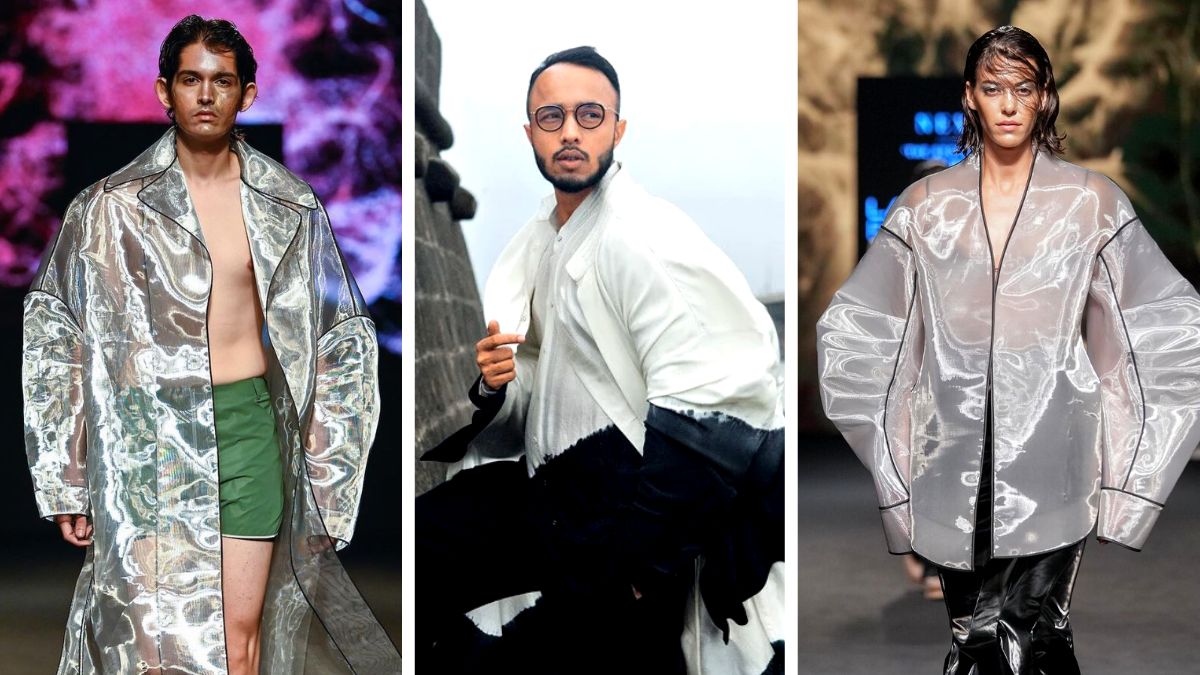
Exclusive: Bloni's Akshat Bansal on reformist fashion that’s way ahead of the curve
From Alphazens, hemp, to science of fashion—all in here.


Deconstructing and reconstructing not just outfits but emotions that serve as the precursor to what lies ahead, Akshat Bansal, is the founder and owner of Bloni, a fashion brand that weaves tech into fabric. He made his Paris Fashion Week debut this year with a futuristic collection. And this season, at FDCI X Lakme Fashion Week, Bansal presented his collection titled, “Preamble” and it was a show that exhibited innovation in fashion at its best. From regenerated materials to heat-sensitive and colour-changing numbers, his collection has it all.
How does Bansal go about carrying the torch for heralding fashion to its promising future? In a conversation with Harper’s Bazaar India, Bansal talks to us about the science of fashion.
Technology plays a big role in your collection. How important do you think tech and innovation are in fashion?

I think tech and innovation are important because we are moving towards the digital realm, right? We’re talking about avatars, meta, and newer apps every day and how can that not reflect in clothing? We’re wearing it, we’re touching it, and we want to perceive a different space every day. And if it doesn’t happen in clothing, I feel like they will eventually become redundant. And that’s why I am trying to bring in a lot of fun elements, a lot of technology, a lot of surprising elements in clothing—reflective materials, to colour-sensitive materials, to water-sensitive materials—which brings that spark in it which I love. We’re talking about gen Zs but the alphazens are going to be different human beings and we want to be ready for them.
What is the purpose of heat-sensitive materials?
The purpose of these materials is to talk about touch and feel because that’s where clothing started, right? Tomorrow when somebody comes to the store and touches it and the colour changes. You know, how in winter you want to wear dark clothing, so it becomes dark then. In summer, it becomes light. This jacket that I am wearing is dark here but when I go in the sun, it is stark white.
What, according to you, should be the ‘It’ fabric in the next five years?
I have a lot of R&Ds going on at Bloni. I want to play with infusions. I love hemp; there are so many things that can happen with it. I love the idea of intertwining metals and woods into materials. So there is a lot of R&D but I don’t want to restrict myself to fabrics. I want to make fabric and fashion—and fashion can be anything.
How do you find a balance between creativity and the business aspects of fashion?

You really need to, as a designer and brand, understand that creativity can flow in but business is important to sustain it. We have a lot of buyer mix in the product and we want to travel around the world to sort of understand how and what the project range could be from not just India, but globally—and for my Indian consumers as well. There are a lot of products in this collection for the Indian market and several for the international market, you know like the export market. The mix-and-merge really works well. It’s really important for me, or other brands to have a balance between two things and if it’s played well, it really works.
What are the most important things in order to keep evolving in terms of fashion?

Having a broader perspective and not having a restrictive mindset is very important. You need to evolve; you can’t really feel you know everything because you don’t. Another thing is patience. If you don’t have patience and you really want things to happen just like that—it doesn’t happen that way. It takes time because everything needs to sort of bloom, right? Also, you need to keep an open-to-suggestion point of view and have an open mind where you can feel there is scope to learn.









